February 2
Burton Lane
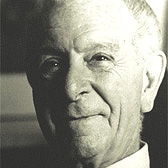
On this date in 1912, composer Burton Lane (né Levy) was born in New York City. “How Are Things in Gloccamorra?” “Old Devil Moon,” “On a Clear Day, You Can See Forever” and “How About You?” (one of two songs nominated for an Oscar) are a few of the beloved standards written by Lane that have made it into the Great American Songbook. His most popular work was the score for the hit 1947 Broadway musical “Finian’s Rainbow,” on which he collaborated with the irreverent lyricist Yip Harburg.
Lane was one of the rare composers who was able to work successfully in Broadway as well as Hollywood, writing musicals and composing music for more than 30 movies (including “Dancing Lady” with Clark Gable and Joan Crawford, “Singin’ in the Rain” with Gene Kelly and “Babes on Broadway” with Mickey Rooney and Judy Garland). He studied classical piano as a child and had his first published song when he was 15. When he was 17, he met George Gershwin and was introduced into the society of first-rank songwriters.
Lane is also known for having discovered Frances Gumm (who changed her name to Judy Garland) in 1934. He had heard the 11-year-old girl singing in a theater and was so impressed with her talent that he immediately set up an audition with MGM executives, where he played the piano as she charmed Hollywood.
There is no proper biography of Lane but FFRF Co-Presidents Annie Laurie Gaylor and Dan Barker interviewed his widow Lynn Lane in 2009 on Freethought Radio during the revival of “Finian’s Rainbow” on Broadway. Barker asked her how Burton got along with Harburg, who was known for his agnostic and progressive views. “They were exactly on the same wavelength,” she told us. “Yip was writing the words, so more of what he felt was evident in his work. When you’re writing the music, there are no lyrics, so what you get, you get from the melody, and that does not show your political opinions. I don’t think there was anything, of any real consequence, that Burton and Yip disagreed about.”
Lane was president of the American Guild of Authors and Composers and served on the board of directors of the American Society of Composers, Authors, and Publishers. He also collaborated with Alan Jay Lerner (“On A Clear Day”). Other well-known songs he wrote include “Look to the Rainbow,” “If This Isn’t Love” and “When I’m Not Near the Girl I Love.” (D. 1997)
“The Lord made Adam. The Lord made Eve.
He made them both a little bit naive.
They lived as free as the summer breeze,
Without pajamas and without chemise,
Until they stumbled on the apple tree.Then she looked at him, and he looked at her,
And they knew immediately what the world was fer.
He said “Give me my cane.” He said “Give me my hat.
The time has come to begin the begat.”So they begat Cain, and they begat Abel,
Who begat the rabble at the Tower of Babel.
They begat the Cohens, and they begat O’Rourkes.
And they begat the people who believe in storks …”— From the "Finian's Rainbow" song "The Begat," music by Burton Lane (1947)
James Joyce
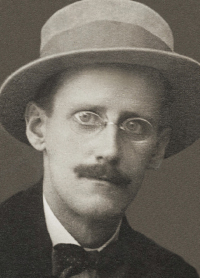
On this date in 1882, Irish novelist James Augustine Aloysius Joyce was born in Rathgar, a suburb of Dublin, into a prosperous Catholic family. They moved constantly in search of cheaper lodgings after his father’s drinking and financial irresponsibility landed the large family into poverty. He was educated in convents and by the Christian Brothers, who pressured him to become a Jesuit. But Joyce rejected Catholicism by the age of 16.
He enrolled in the University College of Dublin in 1898. As a student in 1904, he published a broadside, “The Holy Office,” satirizing the Celtic revival. After living for a time in Paris, Joyce moved to Trieste, Italy, with Nora Barnacle of Galway, whom he finally married in 1931 after years together and two children. In 1904 he wrote to Nora: “Six years ago I left the Catholic church, hating it most fervently. I found it impossible for me to remain in it on account of the impulses of my nature.”
Dubliners, his book of short stories, was published in 1914. Although James’ last glimpse of Ireland was in 1912, as an expatriate he meticulously set his novels there. A Portrait of the Artist as a Young Man was published in London in 1916 after an enraged Irish printer had destroyed the first edition of the novel in 1912. James and his family, including children Giorgio and Lucia, lived on the continent thereafter. Lucia was schizophrenic and was institutionalized from the late 1930s until her death in 1982.
Joyce’s Ulysses, documenting one day in the life of Leopold Bloom in Dublin circa 1904, was published in Paris in 1922. It was banned for many years in Great Britain and the U.S. It took Joyce 17 years to finish the stream-of-consciousness Finnegans Wake, published in 1939. Joyce employed the idea of “epiphanies,” or sudden consciousness, in his work.
According to photographer Andres Serrano, when he told Joyce he wanted to capture his soul, Joyce replied: “Forget the soul. Just get the tie right.” (Who’s Who in Hell by Warren Allen Smith.) When arrangements for Joyce’s burial were being made in Switzerland, a Catholic priest offered to officiate but Nora declined, saying she “couldn’t do that to him.” (James Joyce by Richard Ellmann, 1959.)
Joyce underwent surgery in Zürich for a perforated duodenal ulcer in January 1941. He fell into a coma two days later and a month short of his 59th birthday. He is buried in Zürich along with Nora, who survived him by 10 years, and Giorgio, who died in 1976. Lucia is buried in England.
PHOTO: Joyce in 1915 in Zürich.
“My mind rejects the whole present social order and Christianity — home, the recognised virtues, classes of life and religious doctrines.”
— Joyce letter to Nora Barnacle, Aug. 29, 1904, "Selected Letters of James Joyce," Richard Ellmann, ed. (1975)
Ayn Rand
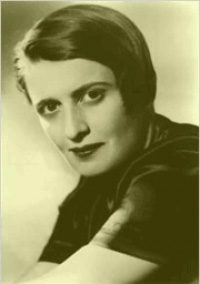
On this date in 1905, Ayn Rand (née Alisa Zinovyevna Rosenbaum) was born in St. Petersburg, Russia, to a nonobservant Jewish family. She became an atheist as a teenager. Immigrating to the United States in 1921, she renamed herself Ayn (rhymes with “mine”) after a Finnish woman; the “Rand” was inspired by her Remington-Rand typewriter. She worked for Hollywood studios intermittently for 20 years, starting as an extra for Cecil B. DeMille and progressing to screenwriter. She married actor Frank O’Connor in 1929 in “a ‘proper’ nonreligious ceremony in a judge’s chambers.”
Rand’s first novel We the Living (1936) was not initially successful. The Fountainhead (1943) secured her place in literature, followed by Atlas Shrugged (1957). Rand’s novels promote her philosophy of Objectivism, promulgated in John Galt’s famous speech from Atlas Shrugged. Galt termed faith “a short-circuit destroying the mind.” Rand’s lecture “Faith and Force: the Destroyers of the Modern World” was delivered at Yale University in 1960.
During her lifetime, Rand’s writing provoked praise and condemnation, but more of the latter. In 2009, GQ critic Tom Carson described her books as “capitalism’s version of middlebrow religious novels” such as Ben-Hur and the “Left Behind” series. After undergoing surgery for lung cancer in 1974, she died of heart failure in 1982.
“The human race has only two unlimited capacities: one for suffering and one for lying. I want to fight religion as the root of all human lying and the only excuse for human suffering.”
— "Journals of Ayn Rand," ed. David Harriman (1997)
Havelock Ellis
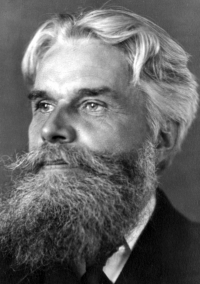
On this date in 1859, sexologist Henry Havelock Ellis was born in Croydon, south London, England. He had four sisters, none of whom married. His father was a sea captain, his mother the daughter of a sea captain. Initially an educator, he returned to school to earn a medical degree but never set up a practice.
He wrote notably on the psychology of sex and criminal reform. His writings include Man and Woman (1894), Sexual Inversion (1897), which advanced the idea that homosexuality is not a disease or a crime, and Affirmations (1898) where his agnostic views are found. He was very conversant with the bible and believed it to be a work of great value.
Ellis studied what today are called transgender phenomena. His landmark six-volume Studies in the Psychology of Sex, was published between 1897-1910. His views were considered so controversial that a bookseller was arrested for selling one of his books.
In November 1891, at the age of 32 and reportedly still a virgin, Ellis married writer and feminist Edith Lees, an open lesbian. Their “open marriage” was the central subject in his autobiography My Life (1939). It’s believed he had an affair with Margaret Sanger.
He died at age 80 in 1939. His wife died of diabetes-related causes in 1916 at age 55. (D. 1939)
“Had there been a Lunatic Asylum in the suburbs of Jerusalem, Jesus Christ would infallibly have been shut up in it at the outset of his public career. That interview with Satan on a pinnacle of the Temple would alone have damned him, and everything that happened after could have confirmed the diagnosis.”
— Ellis, "Impressions and Comments" (1914)
Talleyrand
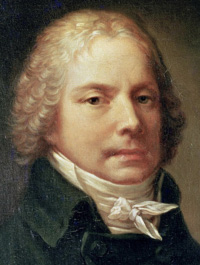
On this date in 1754, French diplomat Charles-Maurice de Talleyrand-Périgord was born in Paris to aristocratic parents who, while not wealthy, both held positions at the court of Louis XV. Talleyrand attended the seminary of Saint-Sulpice while studying theology at the Sorbonne until age 21. He was ordained a priest four years later and in 1780 became agent-general of the clergy, a representative of the Catholic Church to the French crown.
His career spanned the reigns of Louis XVI, Napoleon, Louis XVIII, Louis-Philippe and the years of the French Revolution. His name has become a byword for crafty, cynical diplomacy. He was consecrated as bishop of Autun in 1789.
During the Revolution he became president of the Constituent Assembly and helped frame the Constitution. He proposed the nationalization of church property and worked for a secular system of education. Talleyrand abandoned his bishopric in 1791, then was excommunicated by Pope Pius VI. He was Napoleon’s main adviser in reducing the power of the papacy. His long-held agnosticism combined with his excommunication led to widespread skepticism regarding a tale of his alleged deathbed conversion by a priest, which is a common and fanciful trope employed by religious apologists whenever a famous nonbeliever dies.
Near the end of his life, he reconciled with the Catholic Church and was given the last rites. (D. 1838)
“Wherever there is trouble, look for a priest.”
— Attributed to Talleyrand, source unknown
Tom Smothers (Quote)
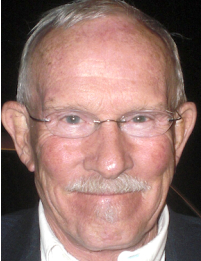
“Easter is when Jesus comes out of his tomb, and if he sees his shadow he goes back in and we get six more weeks of winter.”
— Joke told on “The Smothers Brothers Comedy Hour” (1967-69) by Smothers, born on this date in 1937. (D. 2023)
